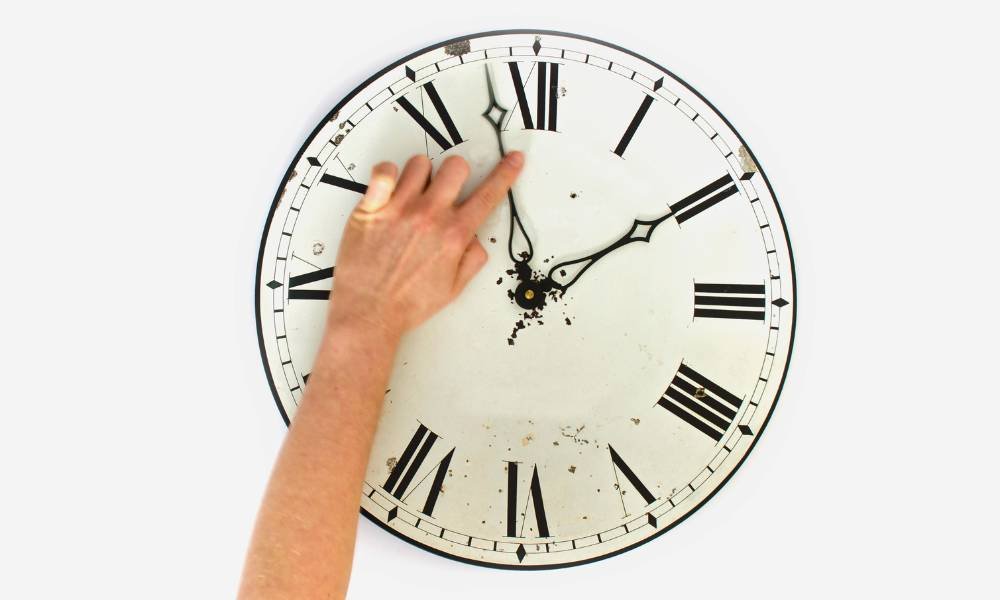Maintaining the accuracy of your wall clock is essential for keeping your daily schedule on track. Over time, you might notice the clock hands becoming loose, affecting their precision. Understanding “How to Tighten Clock Hands” can save you from unnecessary replacements and ensure your watch continues to function smoothly. This guide provides a simple, step-by-step approach to securely tightening your clock hands, restoring their stability and accuracy. Whether you’re dealing with an antique heirloom or a modern timepiece, these tips will help you maintain your watch in perfect working condition. Follow our comprehensive instructions to keep your clock ticking precisely and reliably.
How to Tighten Clock Hands: A Step-by-Step Guide
- Gather your tools: a small screwdriver, pliers, tweezers, and a cleaning cloth.
- Remove the Clock: Safely take the clock off the wall or shelf.
- Open the Clock Case: Carefully open the watch to access the hands.
- Inspect the hands: Check for loose hands and identify any issues.
- Tighten the Hands: Securely fasten the minute and hour hands.
- Check Alignment: Ensure the hands are properly aligned and not touching.
- Test the clock: Set the correct time and observe for smooth movement and accuracy.
Gather Your Tools
Before you begin tightening clock hands, it’s crucial to gather the necessary tools. You’ll need a small screwdriver, pliers, tweezers, and a cleaning cloth. Using the right tools is essential to avoid damaging delicate watch components. A small screwdriver helps with precise adjustments, while pliers provide the grip needed for tightening. Tweezers are useful for handling tiny parts without causing harm. A cleaning cloth ensures that you keep the clock’s surface free of fingerprints and dust. Proper tools make the process smoother and protect your watch from potential damage, ensuring a successful and safe tightening of the clock needles.
Remove the Clock from the Wall or Shelf

Removing your clock from the wall or shelf requires careful handling to avoid damage. Begin by ensuring you have a sturdy ladder if the watch is mounted high. Wear gloves to prevent fingerprints or smudges on delicate surfaces. Gently lift the clock from its hanging position, supporting its base with both hands. For shelf clocks, use both hands to lift and stabilize the watch. Ensure your workspace is clean and padded to prevent scratches. These safety precautions will help you avoid any mishaps while removing the watch, allowing you to proceed with tightening the clock needles safely and efficiently.
Open the Clock Case
Opening the clock case is a crucial step in tightening the clock hands. Start by placing the watch on a soft, flat surface to prevent scratches. Use a small screwdriver to gently remove the screws or clips holding the case together. Carefully lift the back cover, ensuring you don’t force it to avoid damaging delicate parts. Handle the internal components with care, using tweezers if necessary to avoid touching the clock mechanism directly. Keep all screws and small parts in a safe place to avoid losing them. Following these steps will help you safely access the clock needles for tightening without causing any harm to the watch.
Inspect the Clock Hands
Inspecting the clock hands is a crucial step in ensuring accurate timekeeping. To identify loose hands, gently wiggle each hand to see if it moves independently of the watch mechanism. If the hands are loose, they may shift or sag, disrupting time accuracy. Common causes of loose clock needles include worn-out or damaged bushings, loose screws, or general wear and tear over time. Environmental factors like humidity and temperature changes can also contribute to this issue. By carefully examining and identifying these problems, you can take the necessary steps to tighten the clock’s hands and restore its precision.
Tighten the Clock Hands
To tighten the clock hands, start by gently holding the watch face steady. Using a small screwdriver, carefully tighten the nut, securing the minute and hour hands. Turn the nut clockwise until the hands are snug but not overly tight, as excessive force can damage the watch mechanism. Ensure both hands are parallel and not touching each other or the watch face. If necessary, use pliers for a more secure grip. After tightening, rotate the hands to confirm they move freely without obstruction. This simple adjustment will keep your clock needles securely in place, ensuring accurate timekeeping and smooth operation.
Check Clock Alignment
Ensuring your clock hands are properly aligned is crucial for accurate timekeeping. After tightening, check the alignment by setting the watch to a specific time and observing the hands’ positions. The minute and hour hands should move smoothly without touching each other or the watch face. If they are misaligned, gently adjust them using tweezers or a small tool, ensuring they point precisely at the correct markers. Avoid excessive force to prevent damage. Recheck the alignment by moving the hands through a full 12-hour cycle. Correctly aligned clock needles ensure your timepiece runs accurately and reliably, enhancing its functionality and aesthetic appeal.
Reassemble the Clock
After tightening the clock hands, it’s crucial to reassemble the watch correctly to ensure it functions properly. Begin by carefully placing the clock hands back onto their respective shafts, ensuring they are securely fastened. Next, reattach the watch face and ensure it is aligned properly. Check that all screws and fasteners are tight to prevent any future loosening. Reassemble the clock case, making sure all components are securely in place. Finally, hang the watch back on the wall or place it on its shelf. Double-check that everything is stable and that the clock needles move freely without obstruction. This will ensure your watch runs smoothly and accurately.
Test the Clock

Testing your clock after tightening the hands is crucial to ensuring it works correctly. Begin by setting the correct time and observing the watch for a few hours. Check that the minute and hour hands move smoothly without any wobbling or slipping. If the hands are still loose, gently adjust them again, ensuring they are securely fastened. Look for any obstructions or misalignments that may cause issues. Consistently monitor the clock’s accuracy over a day or two to confirm the hands stay in place. If problems persist, consult a professional for further assistance. Proper testing ensures your watch keeps accurate time and functions reliably.
FAQs for How to Tighten Clock Hands
1. Why do clock hands become loose?
✅Wear, frequent adjustments, or vibrations can cause loosening.
2. What tools are needed?
✅small screwdriver, pliers, tweezers, and a cleaning cloth.
3. Can I tighten without removing the clock?
✅Removing the clock is recommended for safe access.
4. How do you know if your hands are tight enough?
✅Hands should move smoothly without wobbling and keep accurate time.
5. What if hands are still loose?
✅Readjust gently, check for obstructions, or consult a professional.
Conclusion
In conclusion, knowing “How to Tighten Clock Hands” is a valuable skill that ensures your watch remains accurate and functional. By following the detailed steps to gather tools, remove the clock from the wall, open the case, inspect, and tighten the hands, you can restore your clock’s precision. Regular maintenance and proper testing help identify any lingering issues, allowing for timely adjustments. This guide empowers you to keep your watch in optimal condition, preventing unnecessary replacements and preserving its lifespan. For any persistent problems, consulting a professional is recommended. Keep your timepieces running smoothly and accurately by mastering the art of tightening watch needles.
